BlueHarvest lease management platform
A digital solution for automating lease calculations and reducing manual workload in the renewable energy sector.
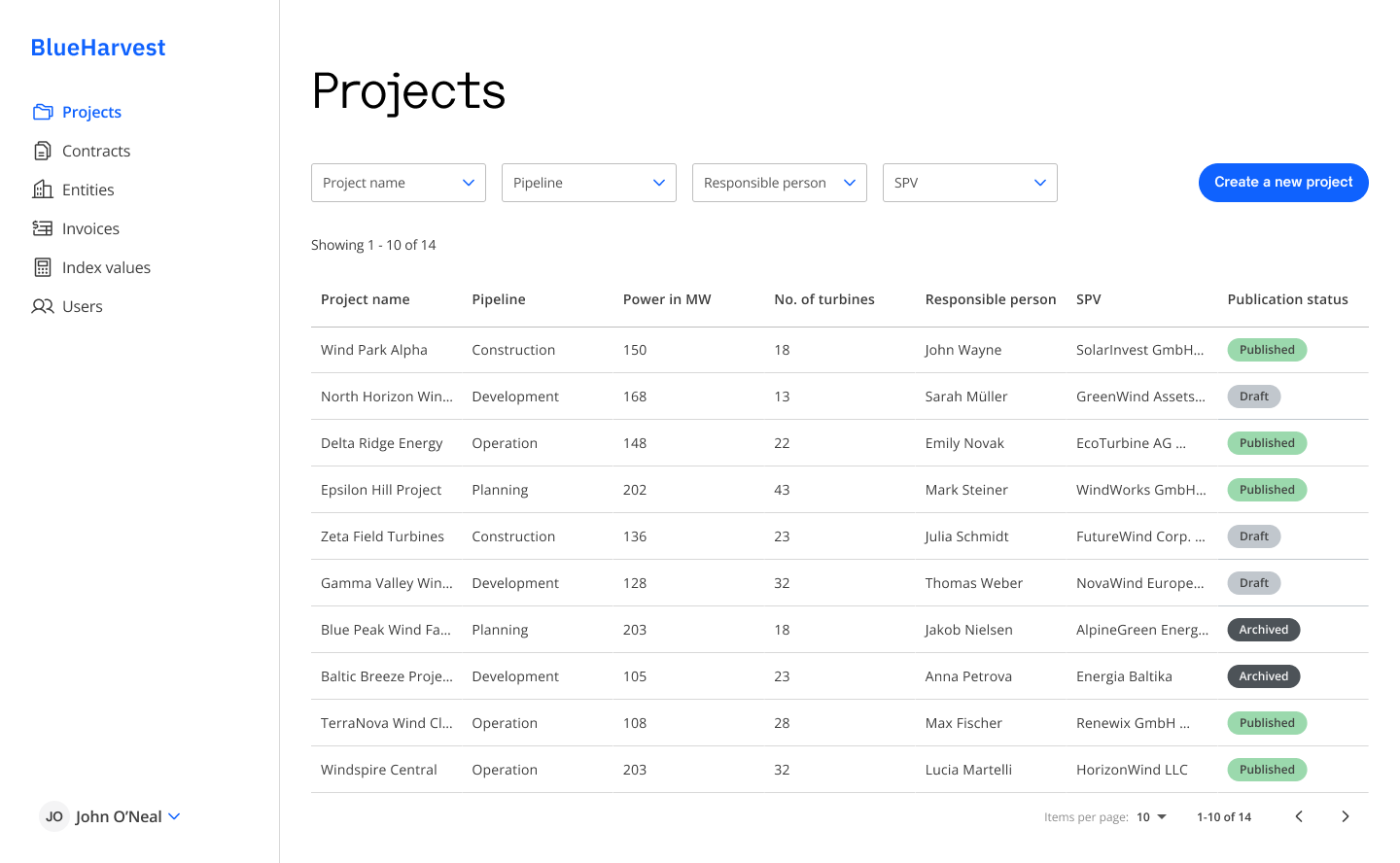
Introduction
When I first started working on the BlueHarvest platform, we faced a complex challenge: the client was manually calculating lease payments for land occupied by wind turbines, using complicated formulas tied to revenue from energy production.
This process was prone to errors, slow, and often frustrating for employees. Our mission was clear: design an application that would automate and simplify these processes.
Project overview
The BlueHarvest is a centralized system for managing land lease terms for wind turbines. This system automatically calculates lease payments and generates invoices according to specific and complex formulas, including revenue-based conditions. Key goals of the application were process automation, centralization of information, elimination of errors, and significant improvement of user experience.The key objectives were:
- Clear and centralized management of all lease conditions.
- Elimination of errors caused by manual calculations.
- Enhanced user experience through intuitive design.
As a UX/UI designer, my task was to clearly visualize and simplify complex processes for end users.
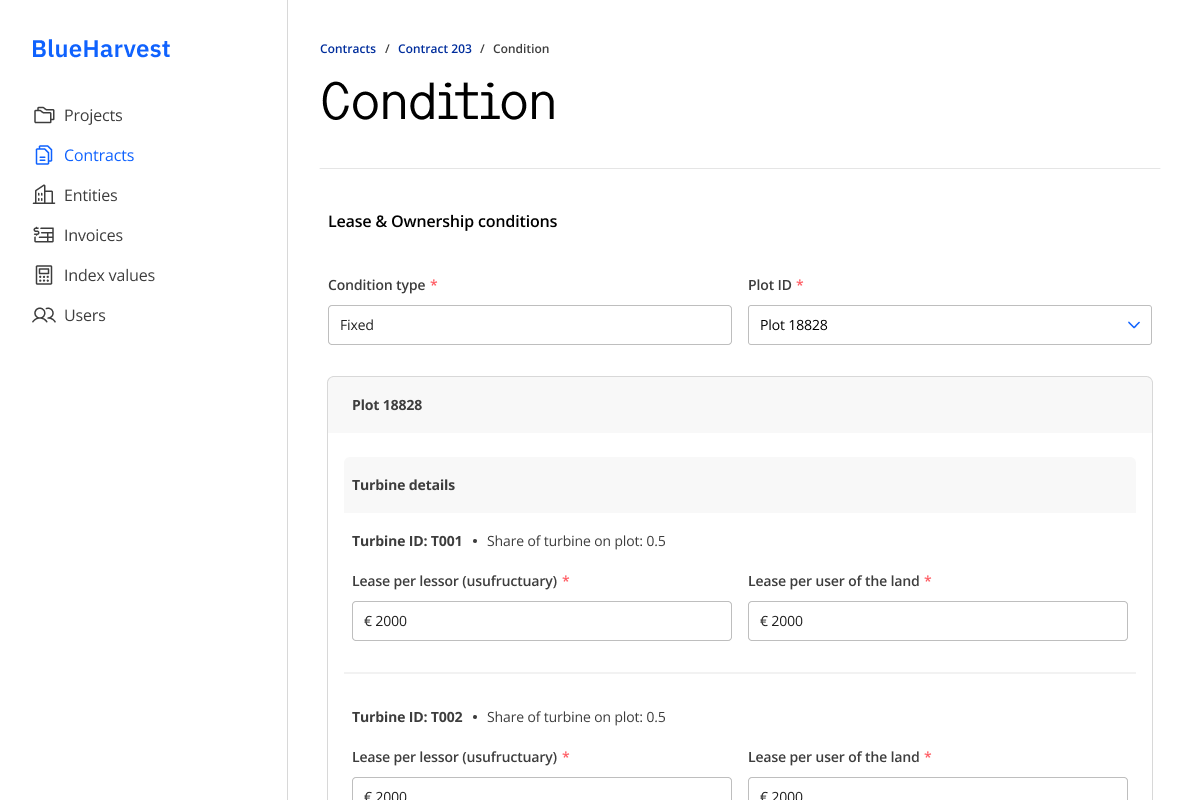
My role on BlueHarvest
As the UX/UI Designer, I was responsible for shaping how users interact with complex lease data every day. My contributions included:
- Defining user flows
Mapped and refined end-to-end workflows to mirror real tasks and eliminate confusion.
- Interaction & visual polishing
Applied the company’s established UI library to craft intuitive controls, feedback states, and micro-interactions—making heavy data feel approachable.
- Developer collaboration & QA
Worked closely with developers to translate designs into code, clarified edge cases, and verified final screens against specs to deliver a pixel-perfect experience. - Design documentation
Compiled concise style references and usage notes so the team could scale features consistently without second-guessing design intent.
Through these efforts, I helped reduce manual workload, boost confidence in the system, and turn a daunting process into a smooth, user-friendly flow.
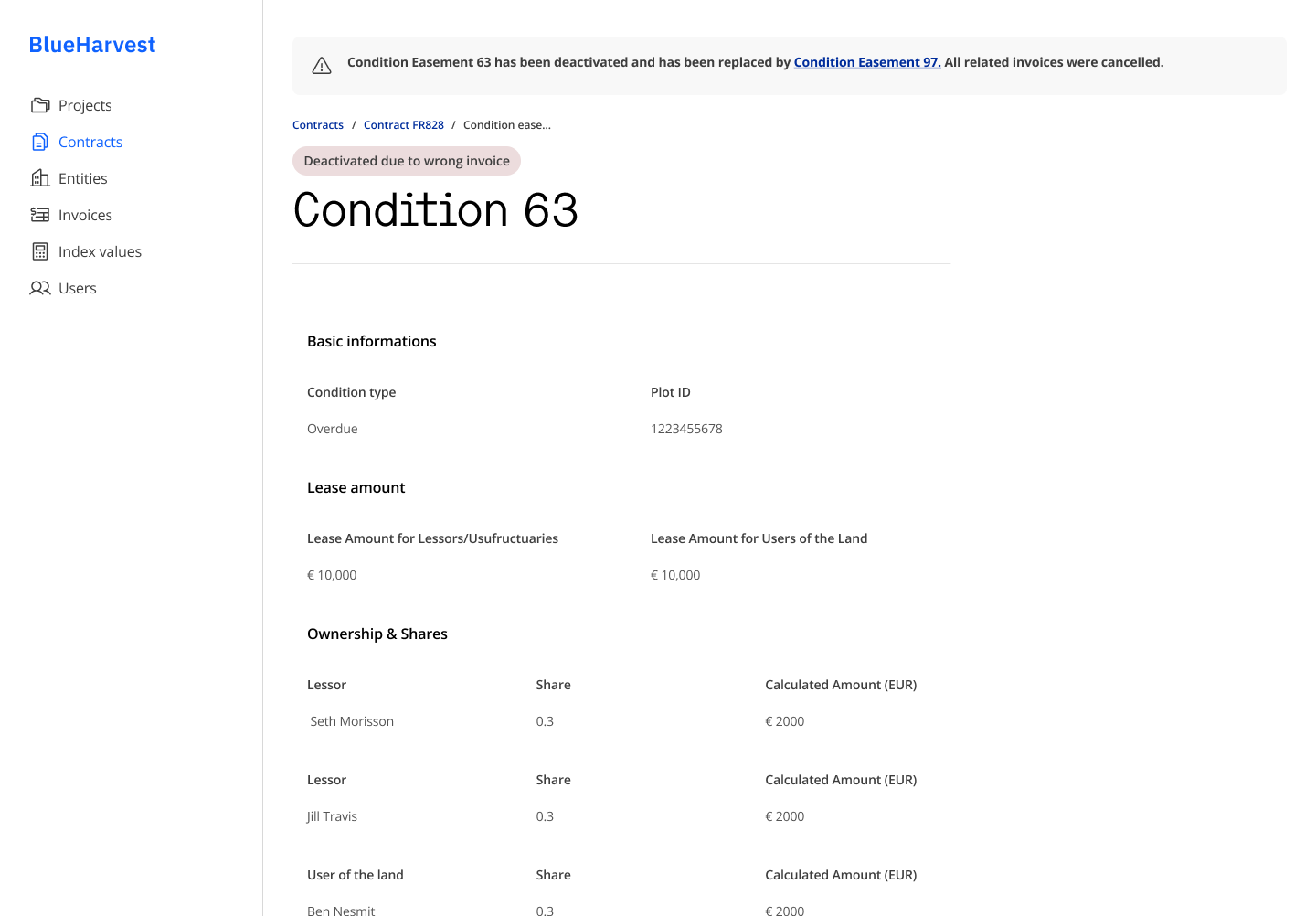
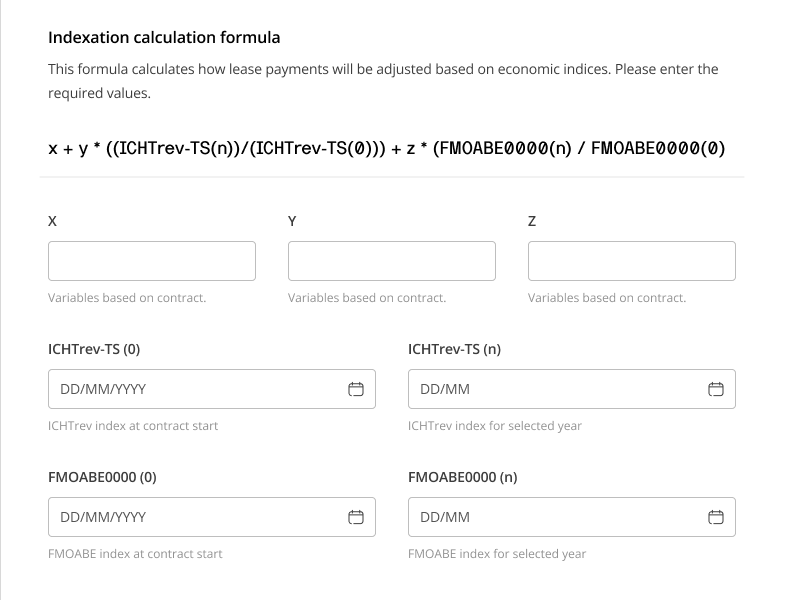
Specific problems we solved
Before, BlueHarvest users were getting bogged down in manual lease-calculation workflows:
- Error-prone formulas
Complex, revenue-based indexation equations led to frequent mis-calculations and costly rework. - Lack of visibility
No single dashboard for tracking lease terms, invoice status, or historical data. - Slow, fragmented process
Users hopped between spreadsheets, PDFs, and email threads wasting time and increasing risk of mistakes.
These core pain points drove our goal: build an integrated platform that automates every step, centralizes all data, and surfaces exactly what users need at a glance.
Our process: From analysis to solution
To solve the defined problems, we applied a systematic approach that allowed us to identify issues early, implement changes quickly, and ultimately arrive at a solution fully aligned with user needs.
Our process consisted of three key phases:
1. Clear and centralized management of all lease conditions.
We started the process with a deep analysis of the existing system and users’ daily tasks. Through a series of workshops with the client, we thoroughly mapped out the entire manual process, identified key frustration points (pain points), and clearly defined user needs. This step was crucial for understanding the core of the problem before starting to design the solution.
2. Structure, architecture
With a clear understanding of the problem, we defined a new information architecture. We structured the application around key areas that made sense to users: projects, parcels, lease conditions, and invoices. The goal was to create a logical and intuitive workflow aligned with real-world user tasks, not technical limitations.
3. Iterative design and validation in Figma
We developed the entire design in Figma. Following an iterative approach, after designing each key screen, we organized validation sessions with the client and future users. This “design–feedback–improvement” cycle allowed us to design each screen with maximum clarity and precision. The visual design emphasized clarity and consistency of elements to ensure an intuitive experience even for users without technical background.
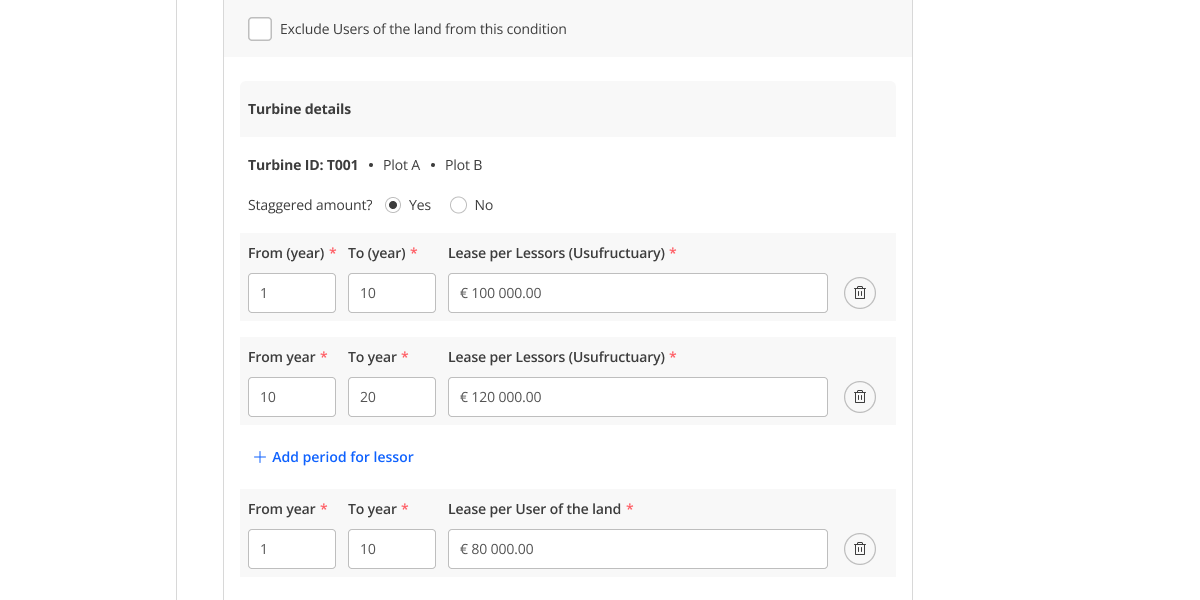
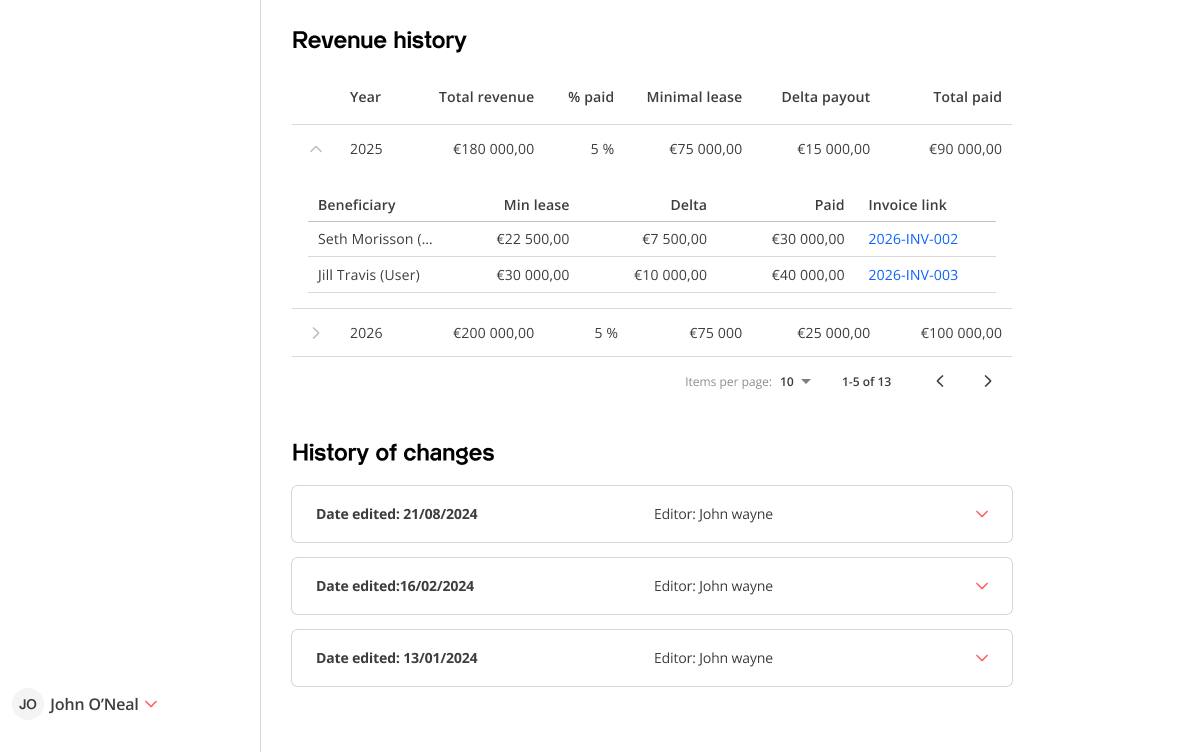
Final solution
The final solution resulted in an intuitive application that fully automates the lease payment calculation process. Now users can quickly and easily create, review, and manage all lease terms, while invoices are automatically generated without errors.
We paid special attention to designing representations of complex revenue-based formulas, visually simplifying processes that previously posed significant challenges for users. We focused on clarity, using clear visual indicators and information hierarchy to ensure easy navigation, even without technical knowledge.
Results and impact
The application achieved the following outcomes:
- Drastically reduced invoice generation time.
- Complete elimination of errors due to manual data entry.
- Significantly improved visibility of processes and lease statuses.
The client expressed exceptional satisfaction with the results, highlighting the application’s ease of use and reliability.
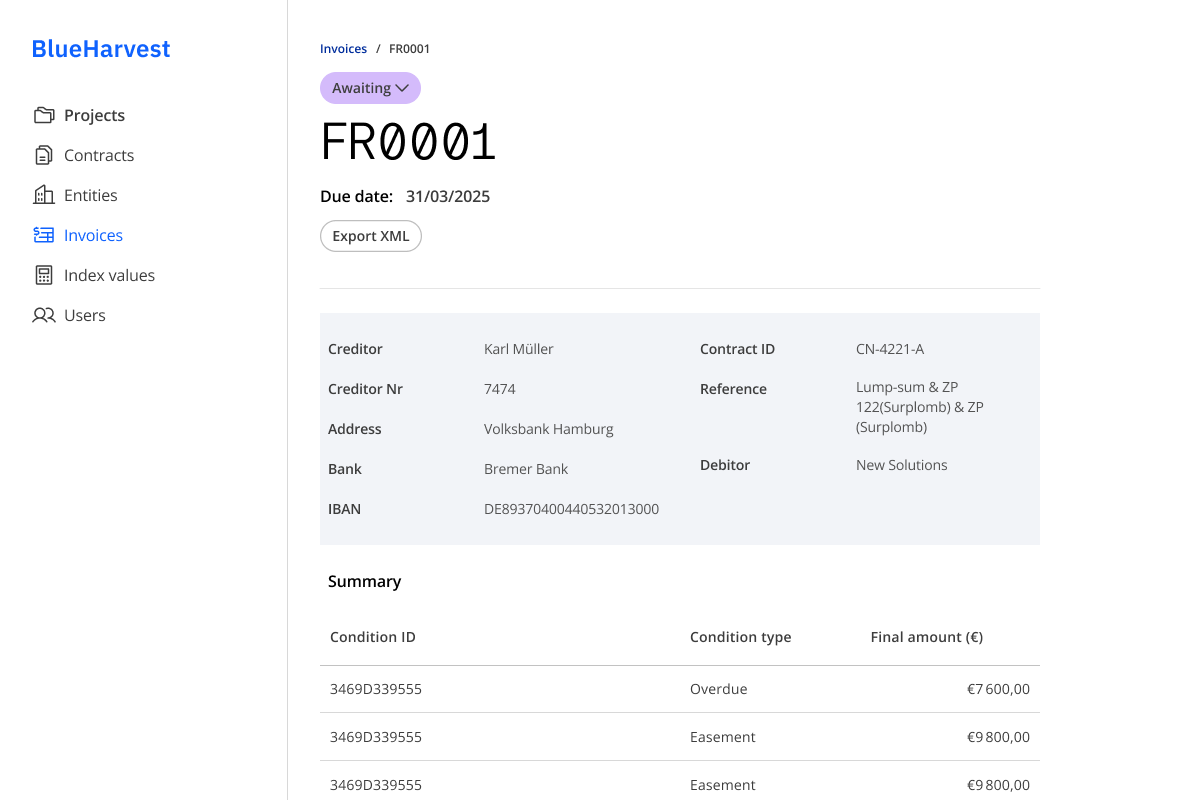
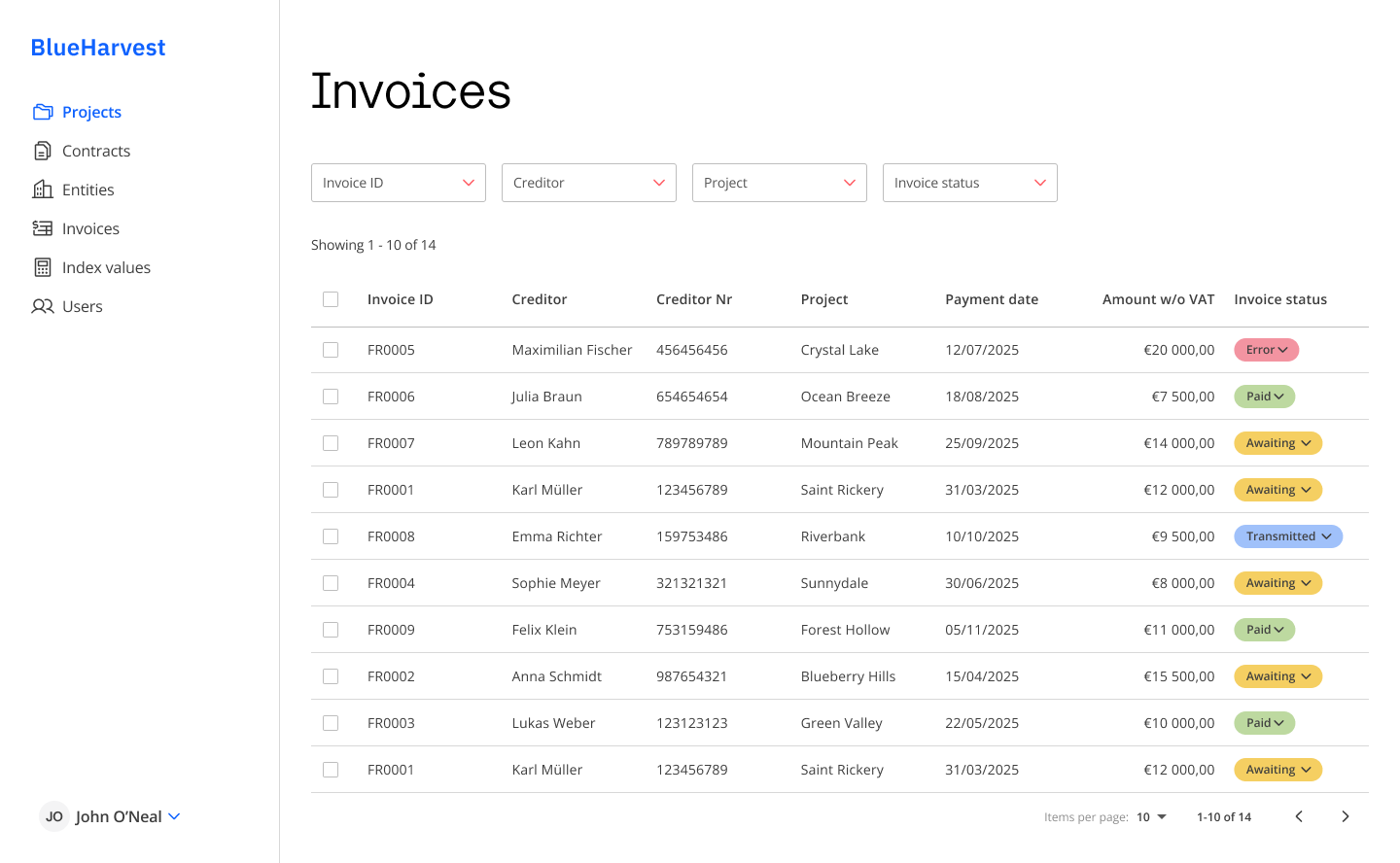
Lessons learned and personal development
This project demonstrated the importance of deeply understanding business processes before designing interfaces. Additionally, I recognized the significance of close collaboration with users throughout the design process, greatly improving my ability to communicate design solutions effectively.
Working on this project significantly contributed to my professional growth, providing invaluable experience in designing complex yet highly practical and user-oriented applications.
Conclusion
The BlueHarvest platform effectively solved the client’s issues by automating complex processes, eliminating errors, and significantly enhancing the user experience. As a designer, this project was inspirational and educational, affirming the clear value of user-centered design.